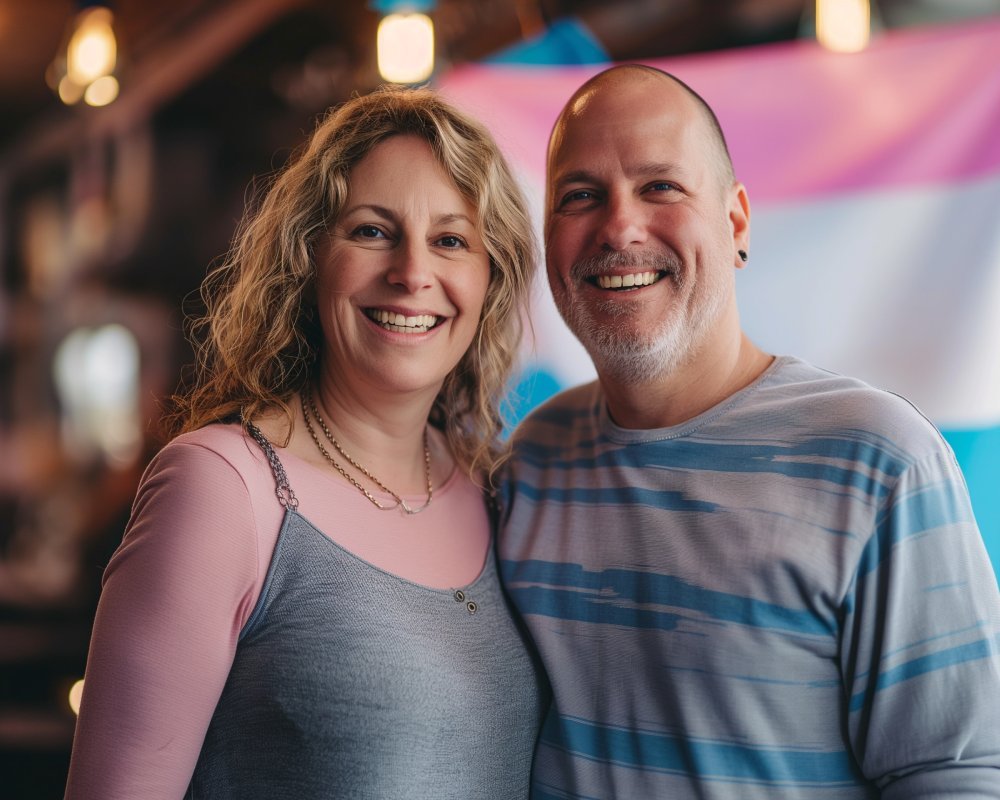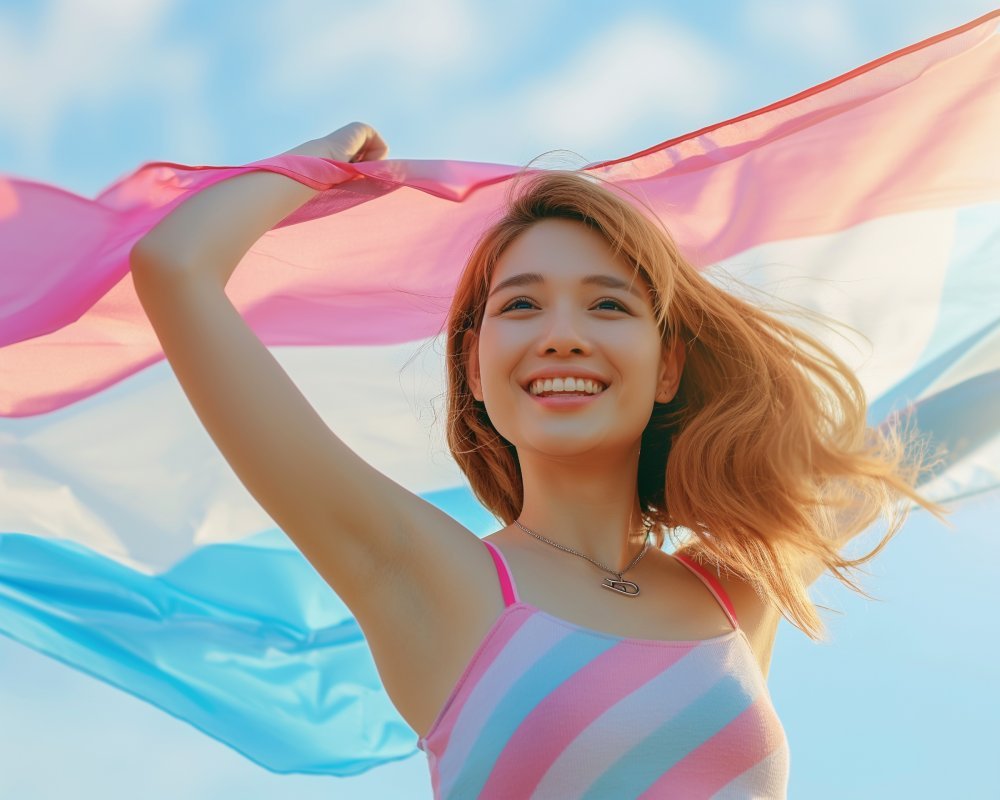
What is a Transvestite?
Understanding gender identity and expression is crucial in today’s society. Among the various terms related to gender and sexuality, “transvestite” is one that often sparks curiosity and sometimes confusion. So, what is a transvestite? Let’s delve into this topic to explore its meaning, history, and significance.
Definition of a Transvestite
A transvestite is an individual who wears clothing traditionally associated with the opposite sex. This practice is often driven by a variety of motivations, including the desire for self-expression, comfort, or even for performance purposes. The term “transvestite” is derived from the Latin words “trans,” meaning across, and “vestire,” meaning to dress.

The History of Transvestitism
The history of transvestitism dates back centuries and spans across many cultures. In ancient Rome, men sometimes dressed in women’s clothing for theatrical performances. Similarly, in Shakespearean England, male actors played female roles, as women were not allowed to perform on stage. The concept of cross-dressing for entertainment is not new, and it has continued into modern times with drag shows and performances.
Transvestitism in Different Cultures
Different cultures have different views and traditions related to transvestitism. In Japan, for instance, Kabuki theater traditionally features male actors known as “onnagata,” who specialize in playing female roles. In India, the Hijra community, which includes individuals who dress in clothing of the opposite gender, has been recognized for centuries and holds a unique place in the cultural landscape.
Difference Between Crossdresser and Transvestite
Many people wonder about the difference between a crossdresser and a transvestite. While the terms are often used interchangeably, there are subtle distinctions. A crossdresser typically refers to someone who occasionally wears clothes of the opposite sex, usually for personal satisfaction. Crossdressers may not necessarily identify with the opposite gender and often continue to live their daily lives in their birth-assigned gender roles.
On the other hand, a transvestite might engage in cross-dressing more regularly and may have a deeper emotional or psychological connection to the practice. However, it’s essential to note that both terms do not imply any particular sexual orientation. Individuals who cross-dress or identify as transvestites can be of any sexual orientation, including heterosexual, homosexual, bisexual, or asexual.
Advertisement · Scroll to continue
Recommended
What is a Transvestite Woman?
A transvestite woman is typically a male at birth who enjoys wearing women’s clothing. This practice can be a form of self-expression, comfort, or part of a performance. It’s crucial to understand that being a transvestite woman does not necessarily indicate a desire to transition to the female gender; it is more about the clothing and the identity it brings.

What is a Transvestite Man?
Conversely, a transvestite man is usually a female at birth who enjoys dressing in traditionally male clothing. This can serve similar purposes, including self-expression and comfort. As with transvestite women, this does not necessarily indicate any desire to transition to the male gender but is focused more on the act of cross-dressing itself.
The Psychological Aspect of Transvestitism
Understanding the psychological motivations behind transvestitism is essential. For many individuals, cross-dressing is a way to explore and express different facets of their identity. It can provide a sense of relief from the societal norms and expectations associated with their birth-assigned gender.
Some psychologists believe that cross-dressing can be linked to the concept of gender fluidity, where individuals feel they embody characteristics of both genders. For others, it may be a form of escapism or a way to experience life from a different perspective.
Social and Cultural Perceptions of Transvestitism
Social and cultural perceptions of transvestitism vary widely. In some societies, cross-dressing is accepted and even celebrated, while in others, it is stigmatized and misunderstood. This dichotomy can significantly impact the lives of those who identify as transvestites, influencing their ability to express themselves openly.
Media Representation of Transvestitism
Media representation plays a crucial role in shaping public perception of transvestitism. Movies, television shows, and literature often portray cross-dressing characters in a comedic or dramatic light. While some portrayals can be empowering and positive, others may reinforce stereotypes and contribute to misunderstandings.
Legal and Human Rights Issues
Legal and human rights issues related to transvestitism are complex and vary from country to country. In some places, cross-dressing is legally protected as a form of expression, while in others, it may be subject to legal restrictions or discrimination. Advocacy for the rights of transvestites often intersects with broader LGBTQ+ rights movements, emphasizing the importance of equality and acceptance for all.
Challenges Faced by Transvestites
Transvestites often face numerous challenges, including societal stigma, discrimination, and misunderstanding. These challenges can impact their mental health, social relationships, and overall well-being. Support from the community, access to mental health services, and legal protections are crucial in addressing these issues.
Support and Resources for Transvestites
Various support and resources are available for transvestites, including online communities, support groups, and counseling services. These resources provide a safe space for individuals to share their experiences, seek advice, and find acceptance. Understanding what’s a transvestite and the challenges they face is vital for offering effective support.
Online Communities
Online communities play a significant role in providing support and fostering connections among transvestites. Websites, forums, and social media groups allow individuals to share their stories, seek advice, and find solidarity with others who share similar experiences.
Support Groups
Support groups, both online and in-person, offer a space for transvestites to connect and share their experiences. These groups often provide emotional support, practical advice, and a sense of community, helping individuals navigate the complexities of their identity.
Counseling and Mental Health Services
Counseling and mental health services can be invaluable for transvestites dealing with the psychological aspects of their identity. Therapists with experience in gender issues can offer support and guidance, helping individuals understand and embrace their identity.

Advertisement · Scroll to continue
Recommended
Notable Figures and Representation
Throughout history, there have been notable figures who have identified as transvestites or engaged in cross-dressing. Their stories and contributions have helped shape the understanding and acceptance of transvestitism in society.
Historical Figures
Historical figures such as Chevalier d’Éon, a French diplomat and soldier who lived as both a man and a woman, have challenged traditional gender norms and paved the way for greater acceptance of gender diversity.
Modern Representation
In modern times, celebrities and public figures like RuPaul, who has popularized drag culture through shows like “RuPaul’s Drag Race,” have brought cross-dressing and transvestitism into the mainstream. Their visibility has contributed to a broader understanding and acceptance of diverse gender expressions.

What is a Transvestite -Conclusion
Understanding what is a transvestite involves recognizing the rich history, diverse motivations, and cultural significance of cross-dressing. Whether driven by personal satisfaction, performance, or a deeper exploration of identity, transvestitism is a valid and meaningful form of self-expression.
By fostering greater understanding and acceptance, we can create a more inclusive society where individuals can express their true selves without fear of stigma or discrimination. The journey to understanding what’s a transvestite is ongoing, but with education and empathy, we can support and celebrate the diversity of human experience.
As we continue to explore and understand the complexities of gender identity and expression, it is crucial to approach the topic with respect and openness. Recognizing the difference between crossdressers and transvestites, and understanding what’s a transvestite woman or man, helps create a more inclusive and compassionate world.
Advertisement · Scroll to continue

More Recommended
How Target Is Connecting with Lesbian Consumers
Inclusive Advertising: How Target is Connecting with Lesbian Consumers As the LGBTQ community continues to [...]
What Is A Butch Lesbian?
What Is A Butch Lesbian? Understanding an Iconic Identity In the diverse and vibrant tapestry [...]
LGBTQ+ Rights in Southeast Asia: Travel Guide
LGBTQ+ Rights in Southeast Asia: Travel Guide – As Southeast Asia becomes an increasingly popular [...]
Ultimate California LGBTQ+ Road Trip Itinerary
Ultimate California LGBTQ+ Road Trip Itinerary – Embark on the “Ultimate California LGBTQ+ Road Trip [...]
How do you practice inclusivity at work?
How do you practice inclusivity at work? – In today’s rapidly evolving workplace, embracing inclusivity [...]
Why Supporting Gay-Owned Businesses Matters in Today’s Market
Why Supporting Gay-Owned Businesses Matters in Today’s Market – In today’s rapidly evolving market, it [...]
How to Date Safely as a Gay Man
How to Date Safely as a Gay Man – Dating can be a fun and [...]
Why Are Gay Rights Still a Controversial Topic?
Why Are Gay Rights Still a Controversial Topic? – Gay rights have remained a contentious [...]
Diversity Drives Success: The Business Case for Supporting Gay-Owned Companies in Advertising
Diversity Drives Success: The Business Case for Supporting Gay-Owned Companies in Advertising In today’s ever-evolving [...]